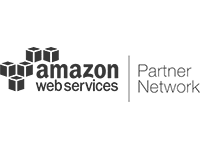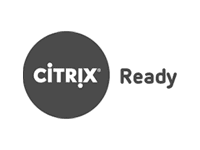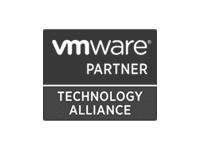The year of the digital cybergeddon
The BBC called 2017 a cybergeddon for data privacy and security. A cybergeddon. What a great word. It’s a term that’s meant to bring up images of a post-apocalyptic wasteland, of the smoking ruins of data centers and bandwidth providers, their server racks in shambles, miles of multi-colored fiber and cat-V strewn in the streets.
It’s very road warrior-esque to imagine. But for businesses hit by ransomware like WannaCry or NotPetya, 2017 was apocalyptic. Incredible amounts of private information were lost or stolen during these attacks. Hospitals were unable to operate, banks were affected, and data giant Equifax became one of the latest victims of an attack they were not prepared for and could not respond to.
It’s been two years since the Godzilla-like emergence of these next-generation ransomware. If history has taught us anything it’s that one day, from the depths of our worst fears, another larger, even more dangerous threat will rise like a leviathan and try to destroy our digital Tokyo yet again.
This is particularly concerning because business users are creating incredible volumes of data. Data usage and growth is happening at rates that mad scientists are calling “dramatic” and “unprecedented.” International Data Corp (IDC)—where many of these mad scientists live—believes that the global datascape could reach 163 zetabytes by the time Generation X starts cracking into their (admittedly very small) 401Ks. This creates a formidable amount of threat landscape to cover, and provides attackers a lot of room to stomp around and cause problems before anyone notices.
Can Data Loss Prevention solutions protect you from Godzilla?
As numerous movie sequels showed us, Godzilla probably can’t be prevented. So how can we protect ourselves from the next, inevitable threat? Data Loss Prevention (DLP) software in combination with organizational policy and controls is one of the key tools IT teams can use to defend their own data. DLP is about understanding who is using your data, when and where. This means monitoring the data itself—when it’s either at rest or in motion across your network—and the endpoints where the data is accessed.
IT infrastructure is growing in size, cost, and complexity, yet the most frequently compromised asset in any enterprise is the lowly endpoint. Desktop users and their systems are where all of the work gets done in an organization. Anything that is stored, emailed, uploaded, or shared across the company starts and ends at an endpoint. Between simple misuse of the data or file permissions associated with them, this information can be put at risk—allowing it to be accessed or even copied by unauthorized users. For this reason, you can’t ignore the endpoints and assume your data is still safe. You need to monitor every open doorway.
How can an IT team (or person) be expected to handle all of this?
Once again, if the movies have taught us anything (and they arguably have taught us most of what we know about life), every great hero has a helpful sidekick who makes their work possible. In this case, DLP software is your trusty sidekick—identifying, monitoring, and protecting your data.
LanScope Cat is a great example of this. It provides a centralized management framework that can help business leaders by enforcing data security policies and preventing the unauthorized use or transmission of confidential data. In particular, it allows IT personnel to monitor endpoints for data exfiltration. It allows for the management and monitoring of these crucial assets as well as monitoring the actions of the employees using the systems. Through control of applications and what hardware is allowed to be connected to specific systems, LanScope Cat provides tools that allow security personnel to visualize data usage and control the routes through which it’s made available. Personally Identifiable Information (PII) can be restricted, its access monitored, logged, and ultimately traced back to a user and a system.
LanScope Cat is also capable of learning what computers are on your local network and how those computers are used each day. This monitoring allows IT teams to implement controls against the unauthorized use (or transmission) of confidential files.
Really, all I need is one piece of software?
It sounds too simple when up against the destruction unleashed by 2017’s cybergeddon, but in reality, it’s the simplest solutions implemented thoughtfully, and consistently monitored, that save organizations from the digital Godzillas like ransomware or insider threats.
LanScope Cat’s four powers of asset management, operational log management, web access monitoring, and device control gives IT administrators and organizational leadership the tools they need to protect their own digital city. While new malware monsters are always being created, the need to manage the access to—and transmission of—data and information remains a domain that LanScope Cat is uniquely capable of protecting.





